Briefs/ Upside Goes Beyond Beyond Meat/ Asian American: A Complicated Label/ Book Matters.
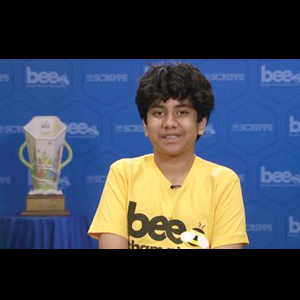
WHO, WHAT, WHERE, WHEN, & WHY
Dev Shah, an eighth grader from Largo, Florida, is the 2023 Scripps National Spelling Bee champ. The 14-year-old won $50,000 and a commemorative medal, while Charlotte Wash, the runner-up, received $25,000. Winning word: Psammophile (plant or animal found in sandy habitats). There were 229 contestants this year, though only 10 made it to the finals. Indian American spellers won 21 of the past 23 championships.
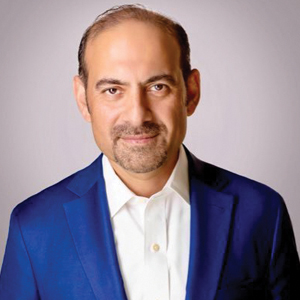
Dilawar Syed has won confirmation to serve as Biden’s Deputy Administrator of the Small Business Administration (SBA). The Pakistani American tech entrepreneur is now the highest-ranking Muslim in the Biden administration. In the Obama administration, he chaired the White House Initiative on AAPI’s Economic Growth Committee. He was also CEO at Lumiata, a healthcare tech company, and President at Freshworks.
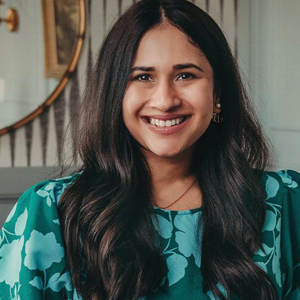
Fariha Nasir, founder of Pennies for a Fortune, is a self-taught designer and DIY enthusiast based in Houston. Her success as an influencer led to a streaming show called Problem Spaces on Max. Viewers can tag along as she helps her clients turn their homes into better living spaces without spending exorbitant sums. Nasir earned a fine arts degree from the Indus Valley School of Art and Architecture in Karachi.
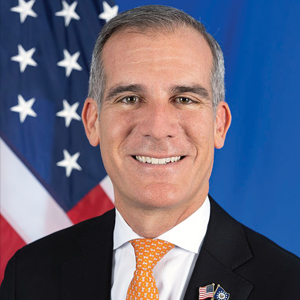
Eric Garcetti, who served as the mayor of Los Angeles for two terms, became the 26th U.S. Ambassador to India. Although Biden had picked him two years ago, the nomination stalled in the Senate, and he won confirmation on a 52-42 vote just a few months ago. Garcetti, who will prioritize green energy solutions to tackle pollution and climate change, studied at Columbia and Oxford, where he was a Rhodes Scholar.
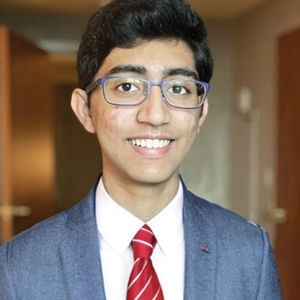
Saathvik Kannan, 17, was a winner at the Regeneron International Science and Engineering Fair. As one of two young scientists honored this year, the high schooler from Columbia, Missouri, received $50,000. He was recognized for a project that uses biocomputational models to understand why the disease mpox, also known as monkeypox, spread widely. His Bioplex model relies on machine learning to study the virus.
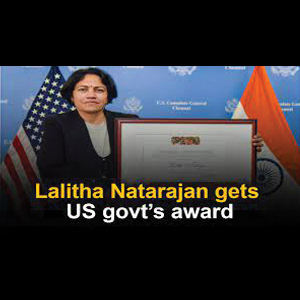
Lalitha Natarajan received the 2023 Iqbal Masih Award for the Elimination of Child Labor from the U.S. Department of Labor. It was presented at the U.S. Consulate in Chennai, where Natarajan works as a lawyer and activist to end exploitive child labor in southern India. She also assists victims of domestic violence and sexual abuse. The award, established in 2008, is named after a Pakistani child who was sold into slavery.
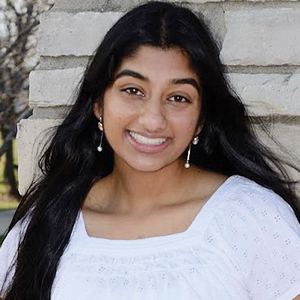
Sirihaasa Nallamothu, a 16-year-old from Illinois, won a $10,000 cash prize for a project that helps us better understand POTS (Postural Orthostatic Tachycardia Syndrome) and find solutions. This 2023 Cutler-Bell Prize in high school computing was awarded to three other teens as well. Taking her findings to the next level, Sirihaasa plans to create a consumer product and pair her algorithm with a smartwatch.

Fatimah Asghar is the first-ever winner of the Carol Shields Prize, a new award open to female and non-binary fiction writers in Canada and the U.S. It’s worth $150,000. The other four shortlisted authors (including Talia Lakshmi Kolluri) received $12,500 each. Asghar won it for When We Were Sisters, published last year by Penguin Random House. She’s the co-creator of an Emmy-nominated web series called Brown Girls.
>> >> >> >>
UPSIDE GOES BEYOND BEYOND MEAT
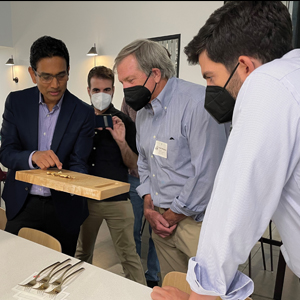 Whatever happened to Memphis Meats? Meat lovers who crave good alternatives may recall the publicity (and excitement) surrounding their humane, lab-centric approach to cultivating meat. Well, they’re still around and making strides, although the food technology company is now called Upside Foods and it moved to Berkeley, California. CEO Uma Valeti, who founded Upside with two others, is not just an entrepreneur. The Mayo Clinic-trained cardiologist, who earned his medical degree in Pondicherry, is an adjunct professor of medicine at Stanford.
Whatever happened to Memphis Meats? Meat lovers who crave good alternatives may recall the publicity (and excitement) surrounding their humane, lab-centric approach to cultivating meat. Well, they’re still around and making strides, although the food technology company is now called Upside Foods and it moved to Berkeley, California. CEO Uma Valeti, who founded Upside with two others, is not just an entrepreneur. The Mayo Clinic-trained cardiologist, who earned his medical degree in Pondicherry, is an adjunct professor of medicine at Stanford.
In recent years, it’s fake meat that’s been in the news rather than the kind of meat made by Upside from animal cells. Plant-based meat is fake meat—and this vegan alternative has made companies like Beyond Meat and Impossible Foods household names. Beyond Meat, which went public in 2019 and generated $465 million in 2021, is available in supermarkets. But because customers are not quite satisfied by fake meat’s flavor and texture, demand has fallen. Moreover, there are health concerns related to processing and ingredients like sodium. As a recent headline in the Financial Times put it, “Losses on meat alternatives leave investors with sour taste.” This gives an opening to companies like Upside. Last year it became the first lab-based company to receive a “green light” from the FDA for a cultivated meat product. Not only are animals unharmed, but it’s a sustainable way of making meat that tastes more authentic than other alternatives. Upside will start with lab-cultivated chicken fillets and move on to sausages, dumplings, and sandwiches. And it’s not just poultry; there are also plans to make beef and duck products from animal cells. Will meat-loving foodies bite?
/|\ /| \ /|\ /| \
ASIAN AMERICAN: A COMPLICATED LABEL
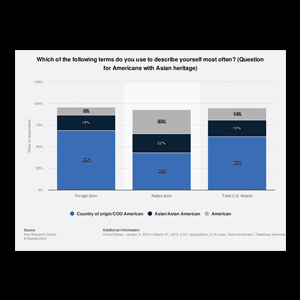
Although the term “Asian American” emerged in the 1960s when the Asian American population was small, it is still used widely. There are six big Asian groups and, when combined with smaller groups, they make up over 7% of the American population today. “But Asian Americans don’t necessarily agree on which regional or ethnic groups from the Asian continent they consider to be Asian,” notes a recent survey from the Pew Research Center. East Asians (like Chinese and Koreans) and Southeast Asians (like Vietnamese and Filipinos) are considered Asian by the vast majority of Asian Americans (89% and 88%, respectively). Only 67% of Asian Americans think of South Asians (like Indians and Pakistanis) as Asian. In another, perhaps less surprising, finding, over half of Indian adults (56%) in this country think of Central Asians as Asian. East Asians and Southeast Asians are less likely to see them as Asian.
Also interestingly, Indian adults (41%) are more likely than other major Asian groups to identify with their ethnicity without adding “American” to the label. However, more Indians (20%) than Chinese, Vietnamese, Filipino, and Japanese are likely to say that “they have hidden part of their heritage from people who are not Asian.” Over half of Indian adults (55%) say that what happens to Asians in the U.S. has an impact on their own lives. And 62% of Indians say a national Asian leader is needed to advance the community’s interests.
& & & & & & & & & &
BOOK MATTERS
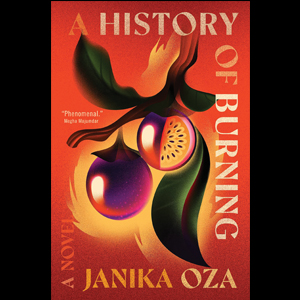
A History of Burning (Grand Central Publishing), by Janika Oza. Like fellow Canadian author M.G. Vassanji, Oza chronicles the saga of East Africa’s Indian diaspora. But Oza, who won a 2022 O. Henry Prize and a 2020 Kenyon Review Award, belongs to a younger generation and she takes readers to Uganda, not Kenya or Tanzania. The story begins in 1898 when Pirbhai, a 13-year-old boy in India, finds work on a ship. His fateful decision has far-reaching consequences for him and his descendants. While he ends up working on the East African Railway, his children have a better life in Uganda as Britain’s colonial rule winds down. Then comes Idi Amin’s brutal regime and the expulsion of Asians from Uganda in the ’70s, forcing Pirbhai’s granddaughters to forge new paths. Oza, who is an educator in Toronto, “has written a generational saga vivid and alive with sensory and historical detail, an excavation of stories often left untold,” according to Giller Prize-winner Omar El Akkad.
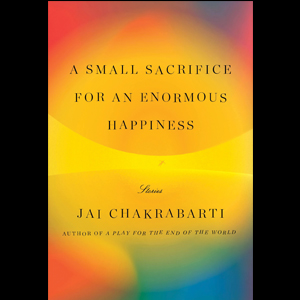
A Small Sacrifice for an Enormous Happiness (Knopf), by Jai Chakrabarti. Following the success of his debut novel, which won the National Jewish Book Award for debut fiction, Chakrabarti is back with an acclaimed collection of 15 stories, a few of which won prizes (O. Henry and Pushcart). Gay couples have found acceptance in India, but as the title story shows, it was quite different in the ’80s. To become a father, a gay man has an unusual idea involving his secret lover’s wife. In another story, an interracial couple’s decision to “import” a nanny from India poses unforeseen challenges for the child’s father, who’s also Indian. Elsewhere, a woman in a troubled marriage, after their adult son leaves home, takes on a daunting project in the garage to fill the emptiness in her life. “The pieces of her airplane winked back under the fluorescent overheads: a Lorenza twin-speed engine, a vintage wood propeller, an aluminum frame, the sheer tarpaulin that stretched into four-foot wings,” the reader learns. Offers “real magic,” says Mira Jacob.
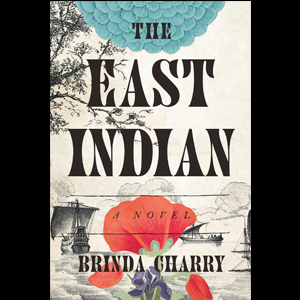
The East Indian (Scribner), by Brinda Charry. In this historical novel set in America, we meet the first immigrant from India. Except, given that these events take us back to the 17th century, Tony—inspired by a real figure—isn’t a migrant in the traditional sense and America isn’t a nation yet. Orphaned on the Coromandel coast, Tony arrives in London as a captive, though the resourceful youth is not a slave. Calling him an early indentured laborer is more appropriate. Tony faces many challenges, but he also embarks on an extraordinary adventure, eventually becoming a settler in colonial Jamestown, Virginia. “The earliest memories I have of my birthplace feature salt—acres of it in translucent flats that glistened in the sun and gleamed in the moonlight, silver mountains of it harvested and brought to the warehouses, and smaller mounds piled in bullock-drawn carts,” Tony notes, reflecting on his origins. “The only whiter thing I was to see in my life was snow.” Charry specialized in English Renaissance literature.
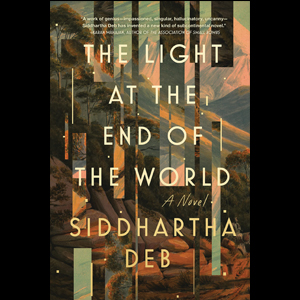
The Light at the End of the World (Soho Press), by Siddhartha Deb. This new novel by an innovative fiction writer comes after his award-winning nonfiction book on India. Earlier, in his debut novel, the events unfolded in reverse chronological order. In this novel, linking the 19th and 20th centuries, there are three timelines, taking readers to Bhopal in 1984, Calcutta in 1947, and the Himalayas in 1859. There’s fiction, reality, history, magic realism, sci-fi, and mythology. The sepoy rebellion ended in 1859—and in 1947, India became independent even as it was partitioned. Also tumultuous was the year 1984, giving rise to a battle, an assassination, a pogrom, and the world’s biggest industrial accident. Praising Deb’s novel for its originality, Readers Digest India adds, “An unforgettable picture of India perpetually under siege but also perpetually rebelling to free itself, whether the adversaries be white-skinned colonizers in the past or brown-skinned CEO robber-barons in the present.”
Enjoyed reading Khabar magazine? Subscribe to Khabar and get a full digital copy of this Indian-American community magazine.
blog comments powered by Disqus












